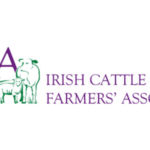29th September, 2015
ICSA rural development chairman Billy Gray is strongly opposing any downgrading of the Low Input Permanent Pasture measure in the latest round of GLAS. Mr Gray said that this measure was absolutely vital for low income cattle and sheep farmers and proposals to cut the maximum area from 10ha to 5 ha would undermine the viability of GLAS for many farmers.
“The GLAS scheme was always a poor replacement for REPS. There seems to be no appreciation that an environmental scheme will not deliver for the environment if it does not deliver for farmers. As is increasingly clear, farmers are expected to work for nothing. The Low Input Permanent Pasture was one element which did not cost farmers significant cash investments and so it attracted low income cattle and sheep farmers. While it is clear that the Minister wants to maximise participation of commonage and natura farmers, he is very mistaken if he thinks that the way to achieve this is to completely discourage lowland farmers with no designated ground from participating at all.”
The rural development chairman also urged that as many farmers as possible should be facilitated to enter the scheme in the next tranche. “The ultimate objective is to get 50,000 farmers into the scheme. At this point, there should be no impediment to farmers getting into the scheme given that the first tranche will be less than 27,000. We have to ensure that the overall Rural Development Programme fund of some €4.1 billion is exploited to the full and that all matching funding from the exchequer is used. We have already seen a delay in getting the Knowledge Transfer Schemes off the ground and it is vital that every cent of much needed funds gets to hard pressed farmers, especially in the cattle and sheep sectors, as quickly as possible.”
Mr Gray was also critical of the removal of hedge planting from the scheme. “While this measure does not give any financial gain to farmers, it should remain as part of the scheme. Hedgerows are of vital benefit to biodiversity and also are an essential part of the landscape. We need to plant hedgerows on an ongoing basis as older hedgerows have a finite lifespan.”






